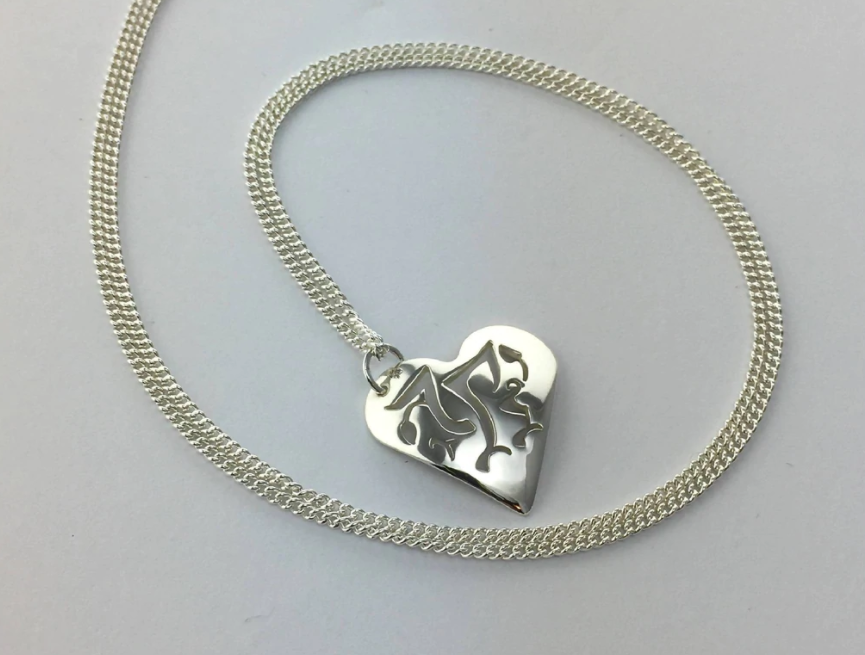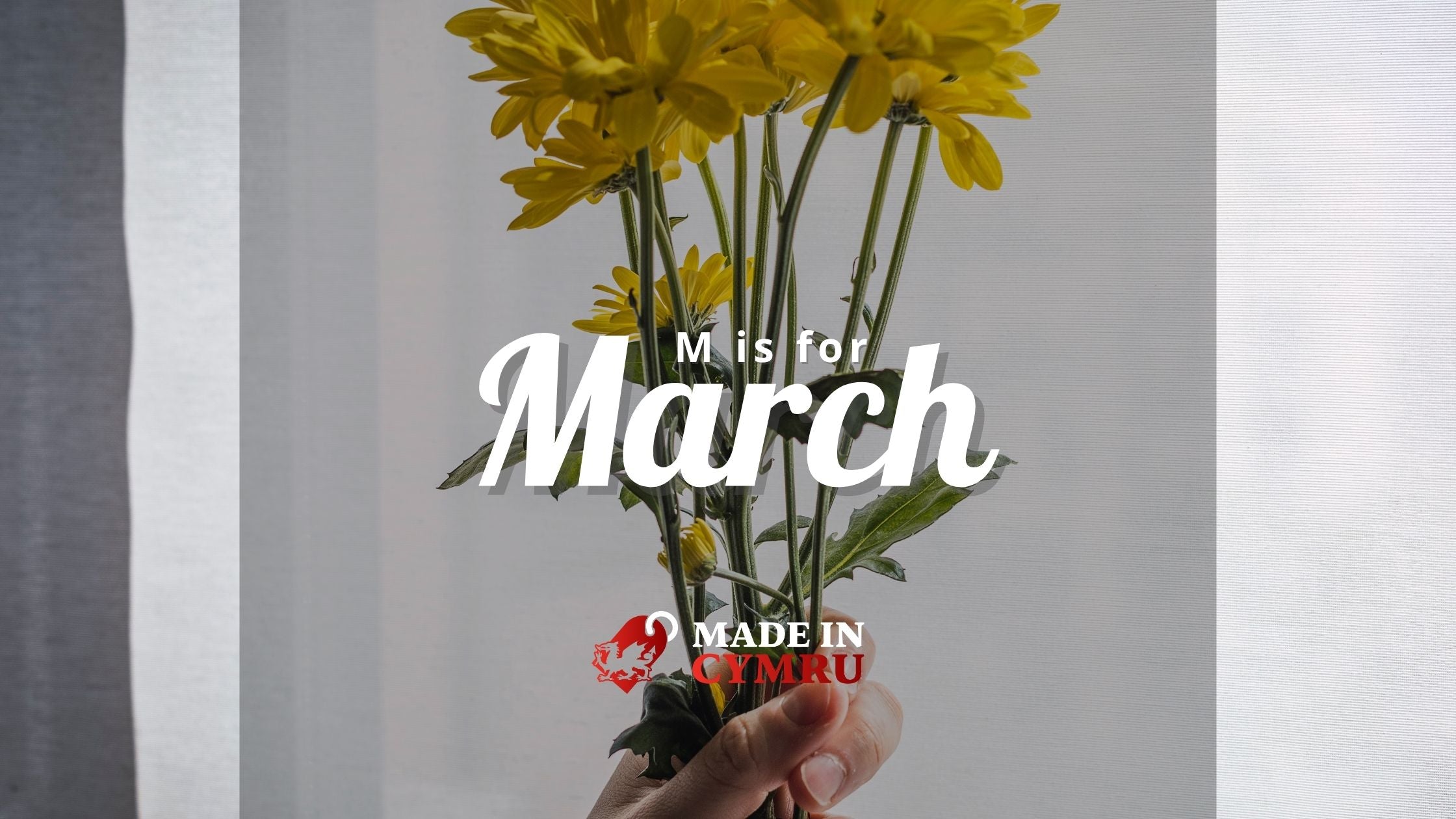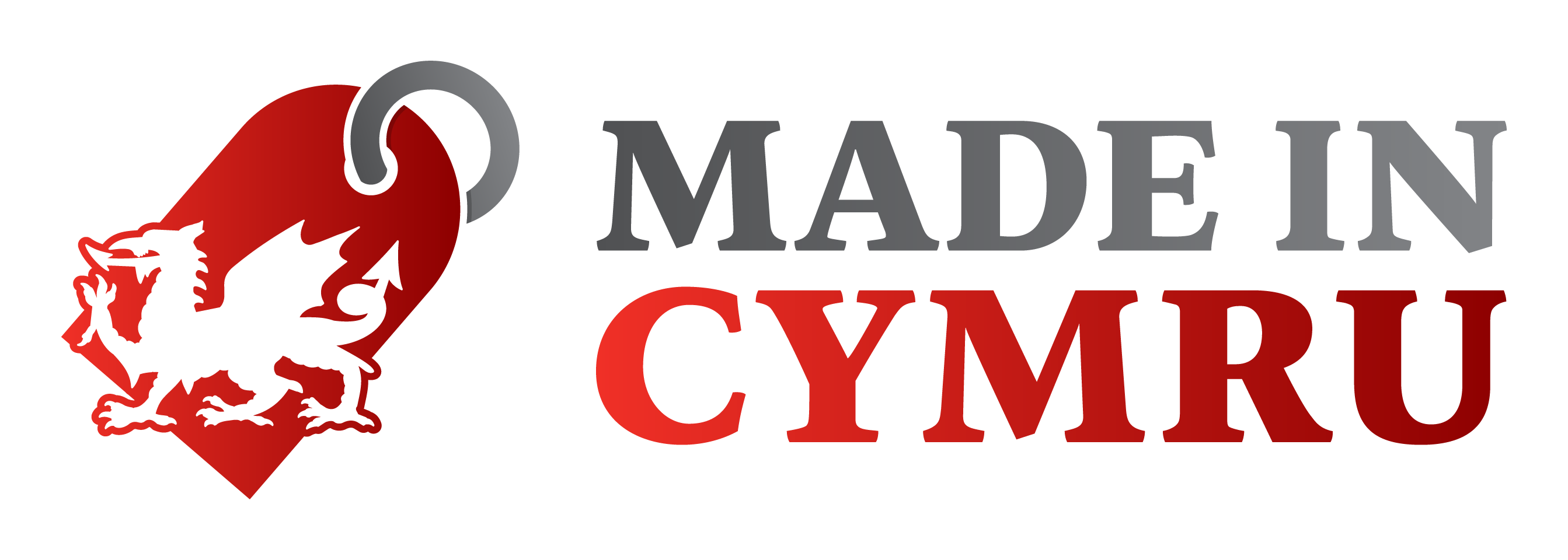Here at Made in Cymru we’re all about the M’s this month…
M is for… Monks and mêl (honey)
We begin with a famous mediaeval monk, St David, as the first of the month sees the celebration of our patron saint.
St David established a monastic community in coastal Pembrokeshire (now the city of St David’s) in around 550. His community was not centred around a grand building, as was the case with monasteries in later centuries, but would have followed the Celtic tradition of a collection of small, beehive shaped stone huts.
Bees also feature in one of the stories about St David, telling the tale of how the honey bee was supposedly introduced to Ireland. The Irish Monk Modomnoc was beekeeper at the monastery, responsible for tending to the bees and collecting the honey and beeswax. When the time came for him to return to Ireland, the bees followed him down to the boat. He returned them to the monastery three times so that he could carry on with his journey. When Modomnoc returned the third time, David blessed the bees and gifted them to Modomnoc to take back to Ireland.
Bee-inspired with our honey bee related gifts:

M is for…Mardi Gras
Ok, that’s pancake day / diwrnod crempog to you and me. It’s a manic start to the month with pancake day also falling on St David’s Day this year. Shrove Tuesday, or Mardi Gras (“fat Tuesday”) marks the last day for eating the richer, fattier foods before the fasting of Lent begins on Ash Wednesday. How about some local Welsh mêl on those pancakes too?
M is for…Mad March hares
March is the month where you could see, if you’re lucky, some Mad March hares. Hares, unlike rabbits, can be difficult to spot. You’re most likely to see brown hares here in Wales in the early morning or evening and they’re more visible in March during mating season. The term “Mad as a March hare” comes from the mating behaviour which involves lots of leaping about , kicking and standing up on their hind legs and “boxing”.
M is for…Melyn
Yes, that cheerful melyn (yellow) harbinger of spring and symbol of Wales and St David’s Day, the daffodil. Daffodils may come in a variety of colours these days, but you can’t beat the simple beauty of our now sadly rare native daffodil “Narcissus Pseudonarcissus”, also known as the “Lent Lily”.
Fed up of sending your mum the usual bunch of flowers for Mother’s Day? Take a look at our flower-inspired gifts instead

M is for… Mother’s Day, Mothering Sunday and Marzipan
Mothering Sunday or Mother’s Day? Are they the same thing? In Wales, yes, although both terms have different origins. The term Mother’s Day actually originated in the USA in the early 20th century after Anna Jarvis successfully campaigned to have an official holiday to celebrate the hard work and sacrifice of American mothers. She organised her first “ Mother’s Day” in 1908 at Andrews Methodist Episcopal Church in Grafton, West Virginia. By 1912, Many US states had adopted Mother’s Day as a celebration and after her persistent campaigning, it was officially established as a public holiday by President Wilson on the second Sunday in May every year.
Here in Wales, we celebrate Mother’s Day in March (or sometimes early April) as our Mother’s Day comes from the UK and Irish Christian Mothering Sunday celebration, which originated as a religious occasion in the 16th century. The term Mothering Sunday has fallen out of fashion and most people now refer to this as Mother’s Day.
Mothering Sunday became an official date in the church calendar, always falling on the fourth Sunday in Lent. On Mothering Sunday, people would attend their “mother” church (the church they had attended as children and where they had been baptised). The fourth Sunday in Lent was also the day of another Christian celebration, known as Laetare Sunday, where people returned home to their families after church and the strict fasting rules of Lent were relaxed for the day.
Later on Mothering Sunday became a day off for young people in domestic service. On this day they could go home and attend the service at their “mother” church and spend the rest of the day visiting their mothers and other family members. It became the custom for the young person to bring a gift of clothing or food from their employer home to their mother.
Simnel cake is more known as an Easter cake nowadays, but it was originally baked for girls in service to take home to their mothers on Mothering Sunday. A Simnel cake is a fruit cake with a layer of marzipan in the middle and another layer on the top. There are also 11 round balls of marzipan on the top of the cake to represent the disciples (minus Judas).
M is for…Mining and metals
We may be world-famous for our coal mines, but Wales also has a long history of mining metals. The Romans mined gold, copper, silver, zinc and lead here. And our history of mining goes back even further, with evidence of copper mining in the Bronze Age. You can follow in the footsteps of the Bronze Age Copper miners by taking a trip down the Great Orme Copper Mines in Llandudno.
No need to venture underground in your search for a precious gift though, Made in Cymru have range of jewellery and metal art handmade here in Wales:

M is for... Mum-to-be
Don’t forget about mums-to-be! Don’t let the hard work of pre-mumhood go unrecognised, she deserves to be pampered!
Browse all Health & Beauty

M is for…More Inspiration?
We hope our March M’s have given you a little inspiration for Mother’s Day. If you’re still undecided, why not have a browse through our full range of Mother’s Day gifts and cards?
Shop Mother's Day Gifts

Shop Mother's Day Cards





